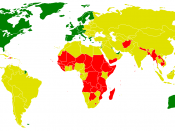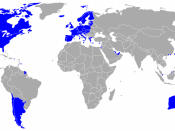These are some statistics on the extent of the severity of poverty in the world. Seventy seven percent of the world's population - four billion people - lives in developing countries. In this so-called "Third World": "à ¾h 1.4 billion live in absolute poverty ( earns below US$1 dollar per day) "à ¾h 180 million children, one in three, suffer from serious malnutrition "à ¾h 1.3 billion people don 't have safe drinking water "à ¾h 2 million children die each year from immunizable diseases "à ¾h 300 million school-age children are not in school "à ¾h female literacy is still only two thirds that of men These are the shocking statistics of poverty in a world today. A world which has progressed by leaps and bounds, entering a new age of technological advancement and social and economic development but was unable to extricate itself from the grip of poverty in the 20th Century. Despite all the scientific achievements made by man, we still can't even provide these people with basic amenities like clean drinking water and food.
Third World countries are centralized mainly in Africa, Latin America and Asia, they have distorted and highly dependent economies devoted to producing primary products for the developed world and to provide markets for their finished goods. They mainly have a rural and traditional society, plagued by high illiteracy, high population growth and widespread poverty.
One of the primary reasons for poverty in the Third World is inequality. It is entrenched social and political inequality at both the national and international level that makes these people poor.
Corrupt governments and the country's elite in the Third World monopolies land ownership and the poor are forced to work on this land. Much of this land is use to grow cash crops like coffee, bananas and sugar for export to developed...


